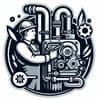Podcast
Questions and Answers
Identify and describe three communication models.
Identify and describe three communication models.
Action, interaction, and transaction models.
How are the three communication models different?
How are the three communication models different?
They differ in the roles of senders and receivers and the elements that compose them.
What are the elements that compose the action model of communication?
What are the elements that compose the action model of communication?
Source, encode, message, channel, decode, receiver, and noise.
What processes do we develop our identities?
What processes do we develop our identities?
What is a stigma?
What is a stigma?
What is a symbol?
What is a symbol?
Define instrumental needs.
Define instrumental needs.
Define physical needs.
Define physical needs.
Define spiritual needs.
Define spiritual needs.
Define relational needs.
Define relational needs.
Define explicit rules.
Define explicit rules.
Define implicit rules.
Define implicit rules.
What are the necessary characteristics of interpersonal communication?
What are the necessary characteristics of interpersonal communication?
What is self-monitoring?
What is self-monitoring?
What is cognitive complexity?
What is cognitive complexity?
Define communication competence and identify its attributes.
Define communication competence and identify its attributes.
What is the difference between high-context and low-context cultures?
What is the difference between high-context and low-context cultures?
What is the difference between individualistic and collectivistic cultures?
What is the difference between individualistic and collectivistic cultures?
What is the difference between high-power-distance and low-power-distance cultures?
What is the difference between high-power-distance and low-power-distance cultures?
What is a communication code?
What is a communication code?
Flashcards are hidden until you start studying
Study Notes
Communication Models
- Three Models: Action, interaction, and transaction models.
- Action Model: Involves a sender encoding a message and conveying it through a channel to a receiver who decodes it. Composed of seven elements: source, encode, message, channel, decode, receiver, and noise.
- Interaction Model: Highlights that messages are shaped by feedback from others and contextual factors. Composed of two elements: feedback and context.
- Transaction Model: Recognizes simultaneous roles of senders and receivers in communication.
Identity Development
- Reflected Appraisal: Self-concept influenced by beliefs about how others perceive the individual.
- Social Comparison: The process of evaluating oneself against others to develop identity.
Stigma
- Definition: A characteristic that discredits an individual, leading to perceptions of being abnormal or undesirable.
Symbols
- Definition: Representations of ideas whose meanings are derived from the people and groups that use them.
Communication Needs
- Instrumental Needs: Practical needs encountered in daily life.
- Physical Needs: Requirements for effective mental and physical health through communication.
- Spiritual Needs: Reflects principles valued in life, encompassing moral beliefs about right and wrong.
- Relational Needs: Companionship, affection, relaxation, and escape through communication.
Rules of Behavior
- Explicit Rules: Clearly articulated behaviors that are well-defined.
- Implicit Rules: Unwritten or understood behaviors not clearly articulated.
Interpersonal Communication
- Characteristics: Occurs between two individuals, evolves within relationships, and serves to negotiate and define those relationships.
- Self-Monitoring: Awareness of one’s behavior and its impact on others.
- Cognitive Complexity: Ability to understand situations in multifaceted ways.
- Dimensions: Involves two individuals and evolves in ways that define their relationship.
Communication Competence
- Definition: Ability to communicate effectively and appropriately in various situations.
- Attributes: Includes self-monitoring, adaptability, empathy, cognitive complexity, and ethical considerations.
Cultural Differences
- High vs. Low-context Cultures: High-context involves ambiguous verbal communication often interpreted through context (e.g., facial expressions), while low-context values explicit and literal communication.
- Individualistic vs. Collectivistic Cultures: Individualistic emphasizes personal responsibility, while collectivistic prioritizes loyalty to the group (family, workplace, community).
- High vs. Low-power-distance Cultures: High-power-distance has power concentrated among a few (e.g., royalty), whereas low-power-distance distributes power more evenly among people.
Communication Codes
- Definition: Verbal and nonverbal communication mechanisms; further details on types are discussed in context.
Studying That Suits You
Use AI to generate personalized quizzes and flashcards to suit your learning preferences.





